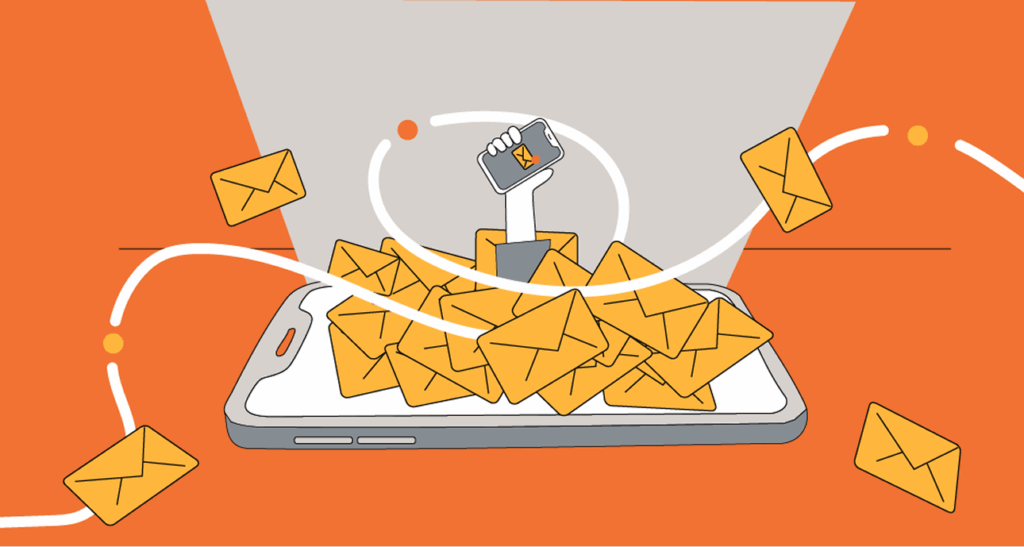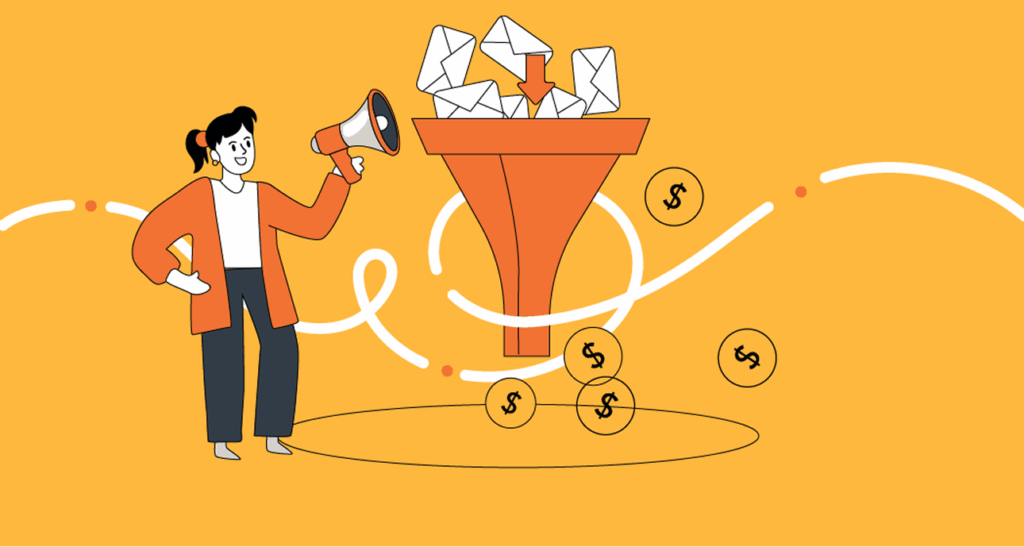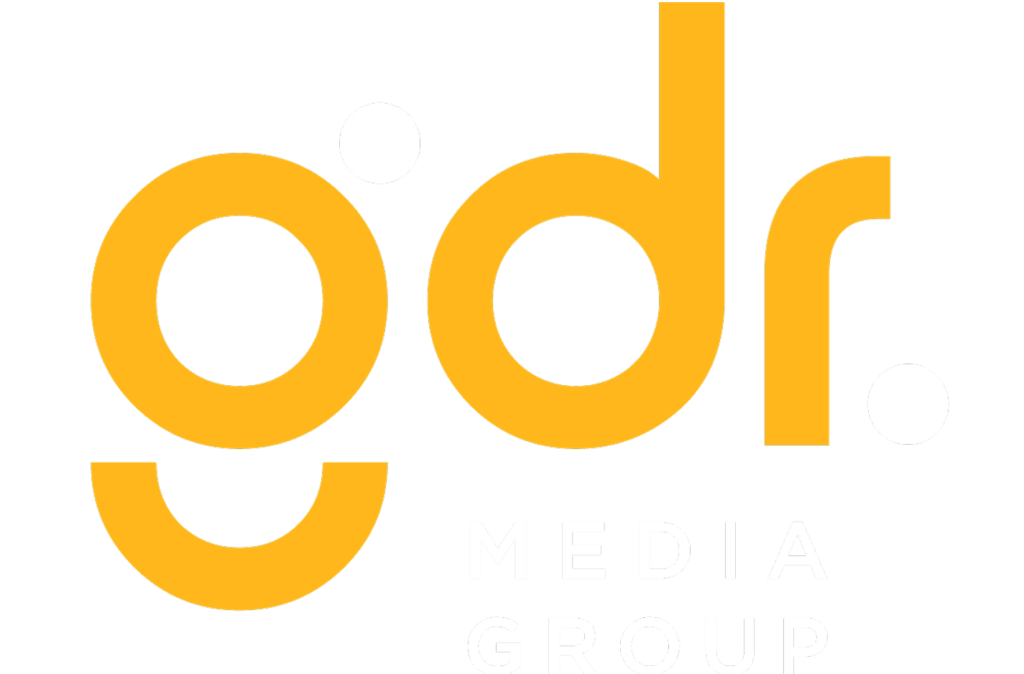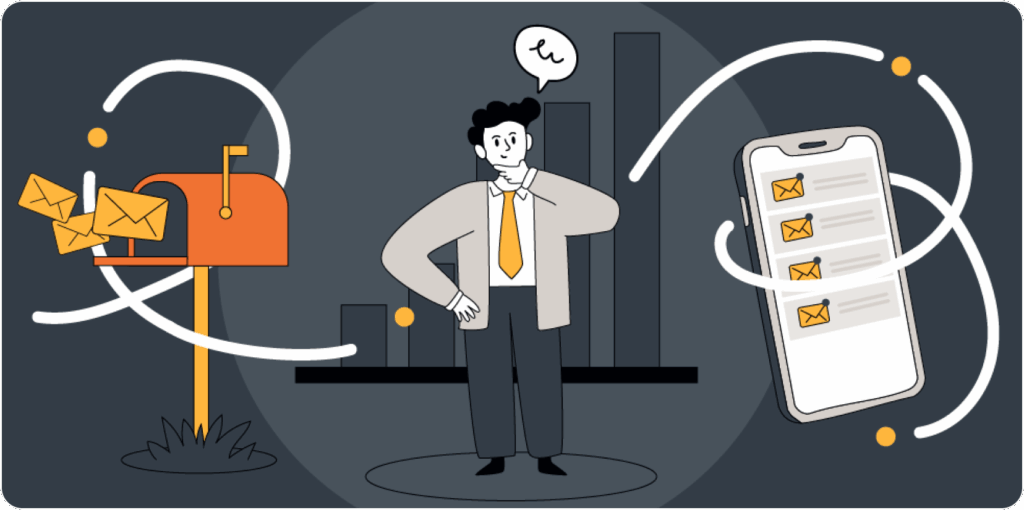In the ever-evolving landscape of marketing, businesses are constantly seeking the most effective ways to reach their audiences. Two prominent channels that have stood the test of time are direct mail and email marketing. Each has its unique advantages and challenges, prompting the question: which one delivers better results? This article explores the strengths and weaknesses of both methods, helping businesses make informed decisions.

Direct Mail Marketing: A Proven Performer
Direct mail marketing has been around for decades, and its effectiveness is well-documented. Many businesses find that tangible mail pieces, such as flyers, magnets or catalogs create a lasting impression on recipients. Unlike digital communications that can easily be overlooked or deleted, direct mail is physical and often engages multiple senses.
The feel of the paper, the design, and even the smell can evoke emotions and encourage recipients to take action. The tactile experience of holding a beautifully crafted piece of mail can create a stronger connection with the brand, making it more memorable than a fleeting email or social media ad.
Moreover, direct mail allows for precise targeting. Businesses can tailor their messages based on demographics, purchase history, and even geographic location. This level of personalisation can significantly enhance response rates. According to recent studies, direct mail can yield a response rate of around 4.9%, compared to email’s average response rate of just 0.6%. This stark contrast highlights the potential of direct mail as a powerful marketing tool. Additionally, with advancements in data analytics, companies can now segment their audience more effectively than ever before, ensuring that the right message reaches the right people at the right time. By leveraging customer data, businesses can craft compelling narratives that resonate with their audience, driving engagement and conversions.
Incorporating innovative design elements can further amplify the effectiveness of direct mail campaigns. For instance, the use of variable data printing allows businesses to customise not just the message, but also the visuals on each piece, making each recipient feel uniquely valued. Furthermore, integrating QR codes or personalised URLs can bridge the gap between physical and digital marketing, providing an easy pathway for recipients to engage with the brand online. This multi-channel approach not only enhances the customer experience but also allows businesses to track the effectiveness of their campaigns in real time, adjusting strategies as needed to maximise impact.

Email Marketing: Cost-Effective but Crowded
Email marketing, on the other hand, has become a staple in digital marketing strategies due to its cost-effectiveness and wide reach. With minimal overhead costs, businesses can send thousands of emails in a matter of minutes. This immediacy and efficiency makes email an attractive option for many marketers. Additionally, the ability to segment audiences and personalise messages allows for a more targeted approach, increasing the likelihood of engagement. By utilising data analytics, marketers can tailor their content to specific demographics, ensuring that their messages resonate with the intended recipients.
However, the crowded nature of the inbox presents a significant challenge. With consumers receiving dozens, if not hundreds, of emails daily, standing out becomes increasingly difficult. Crafting compelling subject lines and engaging content is essential to capture attention, but even the best campaigns can fall flat if they don’t reach the right audience. As a result, the effectiveness of email marketing can be diluted by oversaturation and consumer fatigue. To combat this, marketers are now exploring innovative strategies such as interactive emails, which can include polls, quizzes, or embedded videos, to enhance user engagement and encourage recipients to interact with the content.
Furthermore, the integration of AI and machine learning technologies is enabling marketers to optimise send times and personalise content at an unprecedented scale, making it crucial for businesses to stay ahead of the curve in this ever-evolving landscape.

Open Rates and Attention Spans
When comparing direct mail and email, open rates are a critical metric to consider. Direct mail often boasts higher open rates, as recipients are more likely to physically handle and review a piece of mail. In contrast, email open rates have been declining, with many users skimming their inboxes and deleting messages without a second thought. This phenomenon is exacerbated by the sheer volume of emails that individuals receive daily, leading to a cluttered inbox that can overwhelm even the most organised recipients. As a result, marketers must find innovative ways to stand out in a crowded digital landscape, whether through compelling subject lines, personalised content, or strategic timing.
Attention spans also play a crucial role in how messages are received. Studies show that the average person’s attention span has decreased significantly over the years, making it more challenging for marketers to engage audiences. Direct mail, with its tactile nature, can hold attention longer than a fleeting email. This extended engagement can lead to better retention of the message and, ultimately, a higher likelihood of conversion. Furthermore, the sensory experience of handling physical mail, feeling the texture of the paper, noticing the weight of the mailer, can create a more memorable interaction compared to the ephemeral nature of digital communication. As people become increasingly accustomed to instant gratification, the deliberate act of opening and reading a piece of mail can evoke a sense of anticipation and curiosity that is often missing from the digital realm.
Moreover, the effectiveness of direct mail is amplified by its ability to target specific demographics and create a personal connection. Tailored messaging, combined with high-quality visuals, can resonate deeply with recipients, making them feel valued and understood. This personalisation can be further enhanced by incorporating elements like handwritten notes or unique packaging, which can create a sense of exclusivity and urgency. In contrast, email marketing often relies on algorithms and data analytics to segment audiences, which, while effective, can sometimes feel impersonal. As marketers navigate these two channels, understanding the nuances of open rates and attention spans will be essential in crafting campaigns that not only reach their audience but also leave a lasting impression.

Trust and Credibility
Trust is a vital component of any marketing strategy. Consumers often perceive direct mail as more trustworthy than digital communications. The physical nature of direct mail can lend credibility to a brand, as it requires a level of investment and effort that emails do not. In a world where phishing scams and spam emails are rampant, a well-designed piece of direct mail can stand out as a legitimate form of communication.
Email marketing can struggle with credibility. Many consumers are wary of unsolicited emails, leading to higher rates of spam complaints and unsubscribes. Building trust through email requires consistent branding, quality content, and a strong relationship with the audience. Businesses must work diligently to establish their credibility in the digital realm, which can be a more challenging task than with direct mail.

Choosing the Right Approach for Your Business
Determining the best marketing approach depends on various factors, including business goals, target audience, and budget. For businesses looking to create a memorable impact, direct mail may be the preferred choice. Its tangible nature and higher response rates can lead to meaningful connections with customers.
Conversely, for businesses focused on cost-effective, rapid communication, email marketing may be the way to go. It allows for quick adjustments and real-time engagement, making it suitable for time-sensitive promotions or announcements. Ultimately, the decision should align with the overall marketing strategy and the specific needs of the target audience.

When Direct Mail Outperforms Digital
There are specific scenarios where direct mail clearly outperforms digital marketing. For instance, when targeting older demographics, direct mail tends to resonate more effectively. Older consumers often prefer physical mail, as they may not engage with digital marketing as frequently as younger generations.
Additionally, direct mail can be particularly effective for local businesses aiming to attract nearby customers. Sending postcards or flyers to a targeted geographic area can generate foot traffic and increase brand visibility within the community. In these instances, the personal touch of direct mail can create a sense of familiarity and trust that digital methods may struggle to achieve.

Conversions and ROI: The Bottom Line
When evaluating the effectiveness of marketing channels, conversions and return on investment (ROI) are crucial metrics. Direct mail often demonstrates a higher ROI compared to email marketing. According to industry reports, businesses can expect an average ROI of $36 for every $1 spent on direct mail, whereas email marketing typically yields an ROI of around $29 for every $1 spent. While email may seem more cost-effective at first glance, the higher conversion rates associated with direct mail can lead to greater overall profitability.
However, it is essential to consider the entire customer journey. Email marketing can nurture leads through automated campaigns, driving conversions over time. The ability to segment audiences and personalise messages can enhance the effectiveness of email marketing, potentially leading to higher long-term ROI. Therefore, businesses should assess their specific goals and customer behaviors when analysing conversions and ROI.

Final Verdict: Direct Mail Gets Better Results
In the battle of direct mail versus email, direct mail often emerges as the more effective option for many businesses. Its proven performance, higher response rates, and ability to build trust and credibility make it a crucial yet often overlooked marketing tool. While email marketing offers cost-effective solutions, the challenges of a crowded inbox and declining open rates can hinder its effectiveness.


